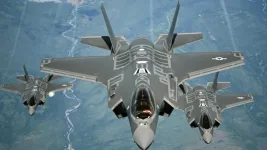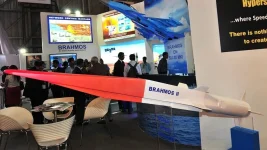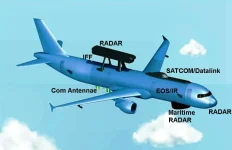- Views: 3K
- Replies: 7
In a significant boost to its military self-reliance and air combat strength, India is preparing to mass-produce the advanced Astra Mk2 beyond-visual-range air-to-air missile (BVR-AAM).
The Ministry of Defence is finalising a strategy to establish two parallel production lines—one led by a state-owned entity and another by the private sector—to accelerate the delivery of what will become the Indian Air Force's (IAF) primary air-to-air weapon.
The Astra Mk2, developed by the Defence Research and Development Organisation (DRDO), is an advanced missile with a strike range of 160 kilometres. It is currently in the final stages of user trials and is expected to receive clearance for full-scale production and induction into the armed forces by 2026.
This move is a cornerstone of India's "Aatmanirbhar Bharat" (self-reliant India) policy, aiming to equip the nation's frontline fighter jets with a domestically produced, state-of-the-art missile.
The missile represents a major technological leap over its predecessor, the Astra Mk1, which has a range of up to 110 km.
A key feature of the Mk2 is its dual-pulse rocket motor, which allows the missile to conserve energy and receive a second thrust in its final attack phase. This dramatically increases its "no-escape zone" and makes it highly effective against agile, high-speed targets.
With a top speed of Mach 4.5 (≈5,500 km/h), a smokeless propulsion system for stealth, and an advanced Active Electronically Scanned Array (AESA) seeker for high-precision targeting, the Astra Mk2 is comparable to leading global missiles like the American AIM-120 AMRAAM and the European Meteor.
Reflecting strong confidence in the missile's capabilities, the IAF is expected to place an initial order for over 500 units.
The Astra Mk2 is slated for integration across the IAF's most critical platforms, including the Sukhoi Su-30MKI, Rafale, and MiG-29K fighter jets, as well as the indigenous Tejas Mk1A Light Combat Aircraft.
This large-scale induction will significantly reduce India's dependence on imported systems such as the Russian R-77 and French MICA missiles.
To meet this substantial demand, the Ministry of Defence is adopting a dual-production strategy. The primary government manufacturer will be Bharat Dynamics Limited (BDL), a seasoned public sector undertaking in missile production.
Simultaneously, a second production line will be established involving private defence firms. Companies like Larsen & Toubro and Tata Advanced Systems, which have been expanding their role in India's defence ecosystem, are expected to be key players in this initiative.
This approach is designed to build industrial capacity, create supply chain resilience, and speed up deliveries to operational squadrons.
This strategy aligns with the government's broader policy of encouraging competition and collaboration between the public and private sectors to build a robust defence industrial base.
By leveraging the expertise of both, India aims not only to fulfill its domestic requirements but also to position itself as a credible exporter of advanced defence systems.
The Astra Mk2's 160 km range provides the IAF with a crucial strategic advantage in potential conflicts, particularly against the capabilities of regional adversaries.
It serves as a potent counter to China's PL-15 missile, which has a reported range of over 200 km, and Pakistan's inventory of AIM-120C missiles.
When paired with the advanced AESA radars on the Su-30MKI and Rafale jets, the Astra Mk2 will enhance the IAF's ability to engage enemy aircraft from a safe, stand-off distance.
The successful production of the missile, which has an indigenous content of over 85%, will be a landmark achievement for India's defence manufacturing sector, involving hundreds of small and medium-sized enterprises.
However, scaling up production, maintaining stringent quality control, and ensuring seamless integration across multiple aircraft fleets remain critical challenges that will require close coordination between the DRDO, BDL, and private industry partners.




